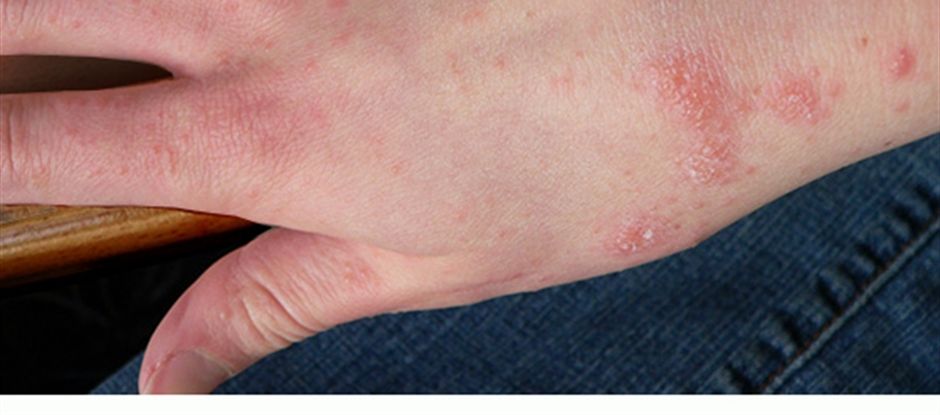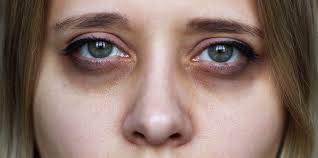Scabies is a highly contagious skin condition caused by tiny mites that burrow into the skin and lay their eggs. It can be identified by symptoms such as intense itching, a rash with red bumps or blisters, skin lesions, and burrows visible on the skin. Read this post till the end to find out its Types, Causes, Symptoms, prevention, treatment, and home remedies.
What Are Scabies
Scabies is a skin condition caused by a tiny mite called Sarcoptes scabiei. The mite burrows into the skin and causes an itchy, blister-like rash. The itching is often most severe at night and can be accompanied by red bumps and blisters.
This skin disease is highly contagious and can be spread from person to person through close physical contact or by sharing clothing or bedding. It can affect people of all ages and races.
If you suspect you have scabies, it’s important to see a doctor for a proper diagnosis and treatment. Treatment usually involves using a prescription cream or lotion that is applied to the skin, and all close contacts should also be treated to prevent the spread of the mites.
It’s also important to wash all clothing, bedding, and towels in hot water and to vacuum furniture and carpets to eliminate any mites that may have fallen off the skin.
Types Of Scabies
There are two main types:
Classical scabies:
This is the most common form and is caused by the typical mite Sarcoptes scabiei. The mites burrow into the skin, causing intense itching and a blister-like rash.
Crusted scabies (Norwegian scabies):
This is a more severe form, that is characterized by thick, crusted sores on the skin. This type of scabies is often seen in people with weakened immune systems, such as those with HIV/AIDS, and can spread easily to others.
In both classical and crusted scabies, the mites can infect any part of the body, but they typically burrow into areas such as the wrists, elbows, armpits, nipples, waist, and between fingers. If this skin condition is left untreated, it spread to other parts of the body and can become a persistent problem.
It’s important to see a doctor for a proper diagnosis if you suspect you have scabies. Treatment for this typically involves using a prescription cream or lotion that is applied to the skin, and all close contacts should also be treated to prevent the spread of the mites.
How to identify scabies
Here are some common signs and symptoms to help you identify.
Scabies Symptoms
The symptoms typically appear 2-6 weeks after exposure and can include:
Intense itching:
The most common symptom of scabies is intense itching, which is often most severe at night.
Rash:
A rash with red bumps and blisters may develop at the site of mite burrows, typically in areas such as the wrists, elbows, armpits, nipples, waist, and between fingers.
Blisters:
Small blisters may appear in areas where the skin has been scratched.
Sores:
In severe cases, scabies can cause sores to form from scratch.
Burrow tracks:
Linear, raised tracks on the skin, which are made by the mites, may be visible.
If you have symptoms, it’s important to see a doctor for a proper diagnosis and treatment. Early diagnosis and treatment can help prevent the spread to others and alleviate symptoms.
Causes Of Scabies
The itching is often most severe at night and can be accompanied by red bumps and blisters.
Scabies is highly contagious and can be spread from person to person through close physical contact or by sharing clothing or bedding. The mites can survive for up to 48-72 hours on clothing, towels, or bedding.
Risk factors for scabies include:
Close contact with someone who has scabies:
The most common way to get scabies is through close physical contact with an infected person, such as hugging, shaking hands, or sleeping in the same bed.
Crowded living conditions:
Scabies is more common in crowded living conditions, such as nursing homes, dormitories, and child-care facilities.
Weak immune system:
People with weakened immune systems, such as those with HIV/AIDS, are more susceptible to scabies.
Travel to endemic areas:
Traveling to areas where scabies is common, such as developing countries, can increase the risk of scabies.
Skin-to-skin contact with animals:
Scabies mites can also infect animals, and skin-to-skin contact with infected pets or livestock can increase the risk of scabies.
It’s important to remember that this condition can affect anyone, regardless of age, race, or socioeconomic status. If you have symptoms or have been in close contact with someone who has scabies, it’s important to see a doctor for a proper diagnosis and treatment.
Treatment Of Scabies
The treatment typically involves using a prescription cream or lotion that is applied to the skin. Some common medications used to treat include:
Permethrin cream:
This is a topical cream that is applied to the entire body, except for the head, and left on for 8-14 hours.
Lindane lotion:
This is a prescription lotion that is applied to the entire body and left on for 4 hours. Lindane is not recommended for pregnant or breastfeeding women, as well as for people with a history of seizures.
Ivermectin:
This is an oral medication that is taken by mouth. It is typically used for severe cases of scabies, as well as for crusted scabies (Norwegian scabies).
In addition to medication, it’s important to take steps to prevent the spread of scabies, such as:
Washing all clothing, bedding, and towels in hot water: This will kill any mites that may be present.
Vacuuming the home:
This will remove any mites that may have fallen off the skin.
Avoiding close physical contact with others:
This will prevent the spread of scabies to others.
All close contacts should also be treated for scabies, even if they do not have symptoms, to prevent re-infestation. It’s important to follow the instructions for the medication carefully and to continue to use the medication for the full course, even if the itching and rash improve.
Early treatment can help prevent the spread to others and alleviate symptoms.
Is Scabies Contagious?
Yes, it is highly contagious and spread easily through skin-to-skin contact or through close contact with infected objects such as clothing, towels, or bed linens. People living in close quarters, such as families, nursing home residents, and military personnel, are at a higher risk of getting scabies.
How To Prevent Scabies
Preventing can be done by following these steps:
Practice good hygiene:
Wash your hands regularly and take a shower daily.
Avoid close contact:
Try to avoid close physical contact with infected individuals, especially skin-to-skin contact.
Use bedding and clothing protectors:
Use bedding and clothing protectors to reduce the risk of infestation, especially when staying in a hotel or other public place.
Avoid sharing personal items:
Avoid sharing personal items such as towels, combs, and clothing with infected individuals.
Clean your environment:
Clean your home, furniture, and personal items to reduce the risk of reinfection.
Get treated:
If you suspect you have scabies, seek medical treatment promptly to prevent the spread of the mites to others.
How To Treat Scabies Naturally
While home remedies may provide temporary relief from scabies symptoms, they are not a substitute for medical treatment. Scabies is a highly contagious skin condition that requires proper treatment to effectively eliminate the mites. Here are some home remedies that may provide temporary relief from symptoms:
Oatmeal bath:
Soak in an oatmeal bath to relieve itching.
Aloe Vera:
Apply Aloe Vera gel to the affected area to soothe itching and reduce inflammation.
Tea tree oil:
Mix a few drops of tea tree oil with carrier oil such as coconut oil and apply to the affected area.
Neem oil:
Neem oil has antifungal and antibacterial properties that may help relieve itching and reduce inflammation.
Cool compresses:
Apply cool compresses, such as a damp cloth, to the affected area to reduce itching and inflammation.
Remember, these home remedies are not a substitute for medical treatment, and it’s important to see a doctor for a proper diagnosis and treatment plan.
Get Rid Of Scabies In 24 Hours
There is no guaranteed way to get rid of this condition in 24 hours, as the mites burrow deep into the skin and can take time to effectively eliminate. However, prompt and proper treatment can reduce the severity of symptoms and prevent the spread of the mites to others.
Here’s what you can do:
See a doctor:
The first step in getting rid of this is to see a doctor for a proper diagnosis and treatment plan. They may prescribe a topical or oral medication to effectively eliminate the mites.
Follow the treatment plan:
It’s important to follow the treatment plan as directed, using the medication for the full recommended course of treatment to ensure that all mites are eliminated.
Clean your environment:
Clean your home, furniture, and personal items to reduce the risk of reinfection. Wash all clothing, bedding, and towels in hot water and dry them on high heat.
Practice good hygiene:
Wash your hands regularly and take a shower daily to reduce the risk of spreading the mites to others.
Avoid close contact:
Try to avoid close physical contact with others, especially skin-to-skin contact, until the mites have been effectively eliminated.
Remember, even with proper treatment, it can take several days to several weeks to completely get rid of this condition, so patience and persistence are key. If you have any questions or concerns, be sure to reach out to your doctor.




